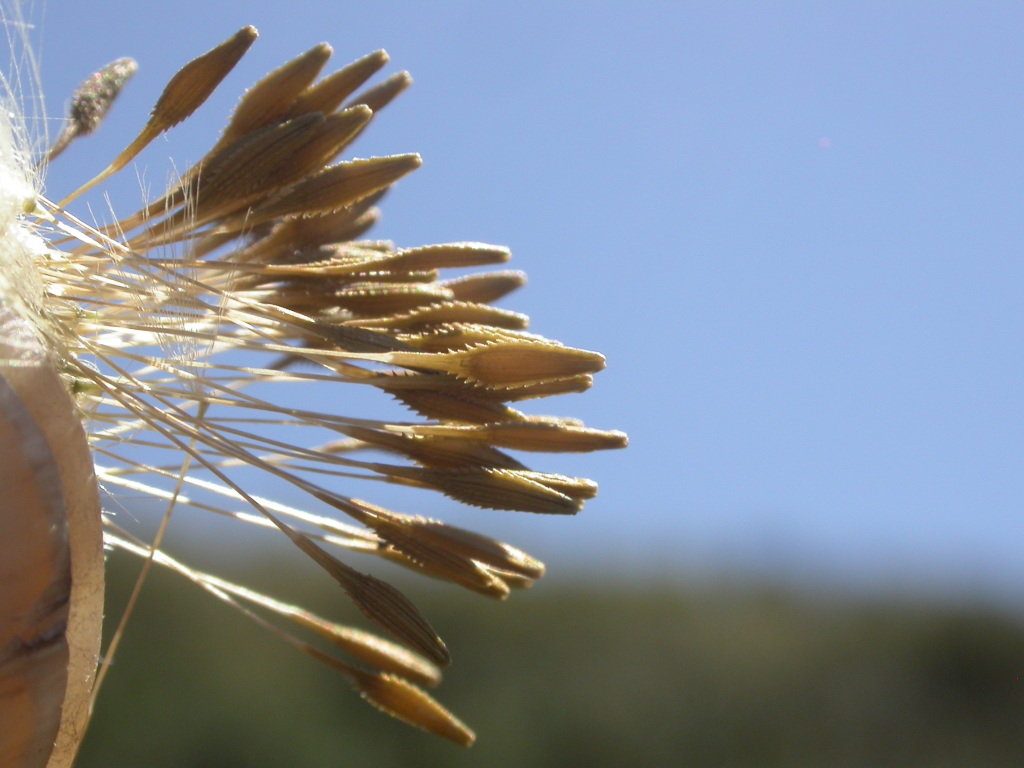Taraxacum aristum
G.E.Haglund & Markl. Mountain DandelionLeaves c. oblong to linear-lanceolate, 8–26 (usually c. 15) cm long, glabrescent; lobes 6–7(–8) each side, short, blunt, deltoid to falcate, distal margins to 5-toothed, 1 or 2 sometimes enlarged into a short lobe; interlobes entire to denticulate; petioles usually purple proximally, very narrowly winged. Scapes 4–18 cm long (to c. 3 times longer in fruit). Capitula 1.5–2 cm diam.; outer bracts appressed to inner series, ovate to ovate-lanceolate, 2.5–6(–7) mm long, apiculate with a small dark callus, white-bordered; ligules pale lemon-yellow; outer ligules subequal to inner bracts; stigmas yellow; pollen present. Cypselas fusiform, 4–5 mm long, yellow-brown, dark grey, red to blackish-purple, spinulose above, smooth in the lower third; cone cylindric, 1–1.5 mm long; beak 6.5–9 mm long, longer than cypsela body. Flowers Dec.–Mar.
GipP, HSF, HNF, VAlp. Also NSW, ACT, Tas. Occurs in grassy woodland and grassland, mainly in subalpine areas of eastern ranges.
A nineteenth-century Victorian collection at MEL ('plains on the Avon') and 3 old collections from New South Wales seem to be intermediate between T. cygnorum and T. aristum. Since these collections are rather fragmentary, modern collections from these localities are needed to assess their significance. They may represent an undescribed section Antarctica species rather than intermediates between T. cygnorum and T. aristum.
Scarlett, N.H. (1999). Taraxacum. In: Walsh, N.G.; Entwisle, T.J., Flora of Victoria Vol. 4, Cornaceae to Asteraceae, pp. 688–694. Inkata Press, Melbourne.
 Spinning
Spinning
